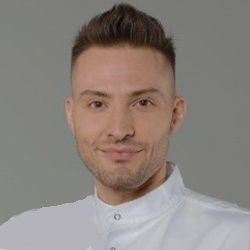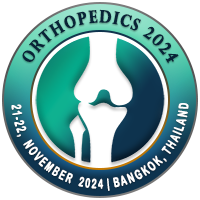
Dmitry Shipika
University of Medicine and Dentistry, Russian FederationTitle: Discopexy in complex treatment of patients with TMJ disorders
Abstract
Objectives: According to Wilkes classification of temporomandibular disorders, there is a gradual aggravation from
initial internal derangements to more pronounced ones, and further with the development of deforming osteoarthritis
and, ultimately, ankylosis. Therefore, one of the goals of a complex treatment plan is to restore normal position of the
internal elements of the joint, and no less important is the subsequent preservation of this position in the postoperative
period. The above is feasible using dyscopexic techniques. This study was carried out in order to evaluate the effectiveness
of discopexic techniques TMJ with the use of cold-plasma ablation and blood plasma enriched with growth factors
(PRGF).
Material and methods: This study involved 50 patients who were treated at the Department of Maxillofacial and Plastic
Surgery with TMJ discopexy. The inclusion criteria were the presence of pain, the limitation of mouth opening and
internal derangements according to magnetic resonance imaging (MRI). The surgical technique was performed according
to the algorithm accepted at the department. All patients were examined before and after the operation clinically and
with use of MRI.
Results: All patients had a complete disappearance or reduction of pain by an average of 83%, estimated by them on a
visual-analogue scale, the opening of the mouth increased by an average of 68.5%. The study revealed no complications.
On MRI after operation were evaluated the correct position of internal joint elements with closed and opened mouth.
Conclusion: The study showed that the use of discopexic techniques with cold-plasma ablation and blood plasma
enriched with growth factors, led to a significant reduction of pain and the increase of mouth openings. It is a safe and
effective method for treating patients with TMD.
Biography
Shipika Dmitry graduated from the Moscow State University of Medicine and Dentistry named after A.I. Evdokimov in 2005. Since 2005 until
2006, he completed a clinical internship at the Department of General Practice Dentistry and Training of Dental Technicians and the Department
of Surgical Dentistry of the Moscow State University of Medicine and Dentistry named after A.I. Evdokimov. From 2006 to 2008 he was trained in
clinical residency at the Department of Hospital Orthopedic Dentistry of the Moscow State Medical University. By the decision of the qualification
commission in 2008, he was awarded the specialty "prosthetic dentistry". From 2008 to 2011, he studied postgraduate school at the Department of
Maxillofacial and Plastic Surgery of the Moscow State Medical University. In 2010, by decision of the State Attestation Commission, he certified
the right to conduct professional activities in the field of "surgical dentistry". In 2012 he has completed his PHD from Federal State Budgetary
Educational Institution of Higher Education Moscow State University of Medicine and Dentistry named after A.I. Evdokimov. In 2014, by the
decision of the attestation commission, she was qualified in the specialty "Maxillofacial Surgery". Current member of the European Association of
Cranio-Maxillofacial Surgeons (EACMF). Since 2015 he has been working as an oral and maxillofacial surgeon in the Department of Maxillofacial
Reconstructive and Plastic Surgery of Moscow State University of Medicine and Dentistry named after A.I.Evdokimov. He is the developer of the
following author's methods: 1. "Results of the use of platelet-rich plasma enriched with growth factors in the treatment of TMJ diseases (TMJ-PRGFDSM)"
2. "Algorithm for the diagnosis and treatment of TMJ diseases in patients with malocclusion (Alg_DrobyshevShipika)"
3. "Method for minimally invasive surgical treatment of internal disorders of the temporomandibular joint using arthrocentesis with arthrolavage"
(Patent for invention No. 2576787).

